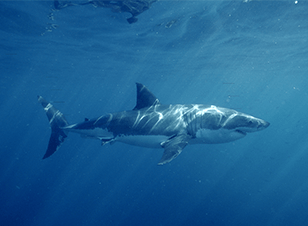Picture this. You’re walking through a shopping centre on a relaxed Saturday morning when, bam, out of nowhere loud music starts playing, a single person begins to dance, then another, and another, AND ANOTHER! Until fifty or more people are groovin’ to the same beat and rockin’ synchronised choreography. Do you stop to watch? Of course you do, who wouldn’t?
You will most likely reach for your smart phone to ensure you capture it all, because, really, you can’t quite believe it. And because it was so amazing, you’ll post it to social media. It’s called a flash-mob, and it can be just one of many current forms of guerrilla marketing.
Guerrilla marketing is a unique form of marketing that was originally used as a low-cost unconventional marketing technique that included forms like graffiti, sticker bombing and flying posters. Nowadays you are more likely to see flash mobs and viral campaigns springing up every time you go online. In fact we often come across many forms of viral guerrilla marketing we just don’t always recognise it.
The purpose of guerrilla marketing is to generate buzz and get people interested by using unusual forms of marketing. Our life is now so entwined with the online world that there’s no better place to make your mark than through a viral campaign.
What is Guerrilla Marketing?
 In July 2014, Discovery Channel posted a video online of a shark in Lake Ontario. The video (which was not posted under the Discovery Channel) went viral as residents were terrified to enter the lake, and the video appeared on thousands of Facebook news feeds and even in news outlets. When it finally came out that the video was a hoax by the Discovery Channel it was admitted that the purpose of the video was to generate interest in upcoming Shark Week.
In July 2014, Discovery Channel posted a video online of a shark in Lake Ontario. The video (which was not posted under the Discovery Channel) went viral as residents were terrified to enter the lake, and the video appeared on thousands of Facebook news feeds and even in news outlets. When it finally came out that the video was a hoax by the Discovery Channel it was admitted that the purpose of the video was to generate interest in upcoming Shark Week.
Like a flash mob or graffiti, creating viral traffic is just one form of guerrilla marketing. Guerrilla marketing was first identified in 1984 by Jay Conrad Levinson and though the delivery mediums have changed over the course of the last few decades the concept has stayed the same.
Guerrilla marketing was given it’s name from the term guerrilla warfare which is a form of irregular warfare that was used by civilian forces who employed tactics such as ambushes, sabotage, raids and elements of surprise. Guerrilla marketing employs the same sort of tactics in advertising, it requires high energy and imagination. Guerrilla marketing needs to catch the consumer off guard, make an impression and create a social buzz.
Why is Viral Considered Guerrilla Marketing?
There has been a rise in companies needing to capture the attention of their consumers by creating viral campaigns and content. But they also need their messages to spread far and wide, generally via social media.
Just like the Lake Ontario shark video, Red Bull used video to create a viral campaign. On October 14th 2012, Red Bull and Austrian extreme athlete Felix Baumgartner set a world record for the highest skydiving jump. On that day Red Bull also broke social media records having confirmed over 8 million concurrent views on YouTube, a feat which was achieved by using share and live stream features on Twitter and Facebook.
Though you don’t need a man to jump from space in order to make a successful viral marketing campaign, you just need to attract the masses. The less extreme but still effective campaigns include “Mad Men Yourself” which allowed users to retro themselves in order to promote the show Mad Men.
Why is Viral so Effective?
 Firstly, content and videos can be uploaded from anywhere and at anytime and by anyone from all over the world. The Internet and social media has given people and brands instantaneous access to a platform that delivers content straight to the pockets of millions of people.
Firstly, content and videos can be uploaded from anywhere and at anytime and by anyone from all over the world. The Internet and social media has given people and brands instantaneous access to a platform that delivers content straight to the pockets of millions of people.
We actually see so much viral marketing that most of the time we don’t even realise that we are being marketed to. This viral content provides excitement and entertainment but at the same time makes us aware of the company that is sponsoring the video/post/app.
As we are constantly blasted with media, it can be difficult to get the attention of consumers, which is why guerrilla marketing is more relevant than ever. Learning what kind of content your audience is most interested in, and providing them with fresh material that surprises and entertains them is the best chance of breaking into the viral market.
How could you grab your audience’s attention in a unique and memorable way? What forms of advertising have you seen lately that you might categorise as guerrilla marketing?

